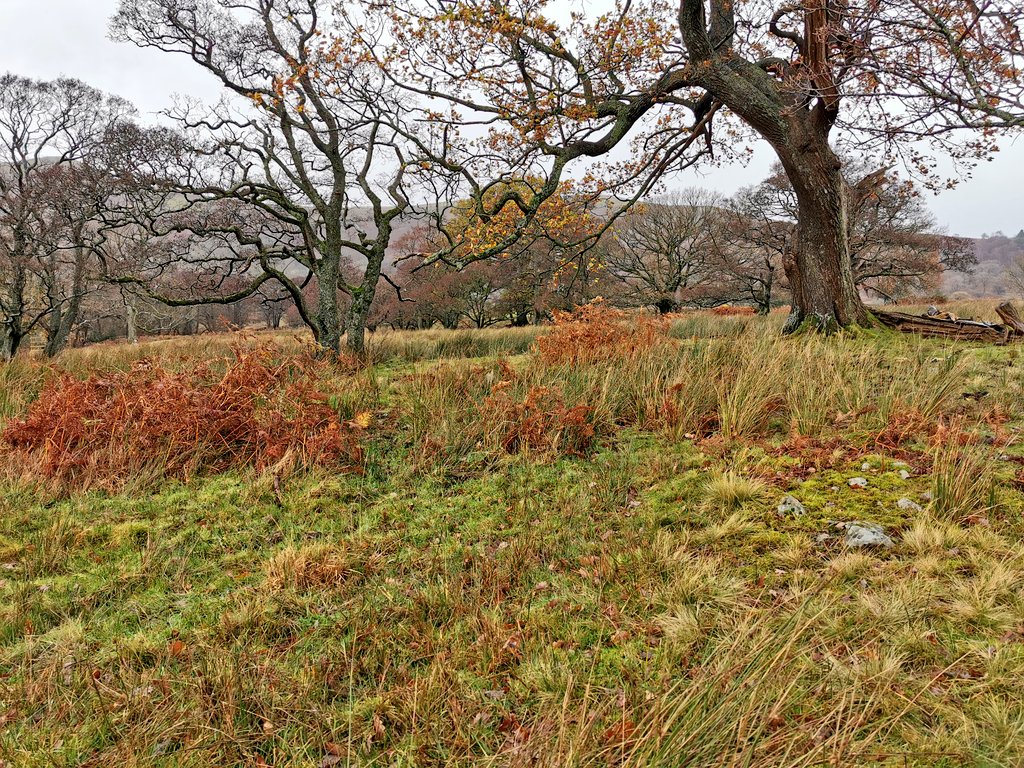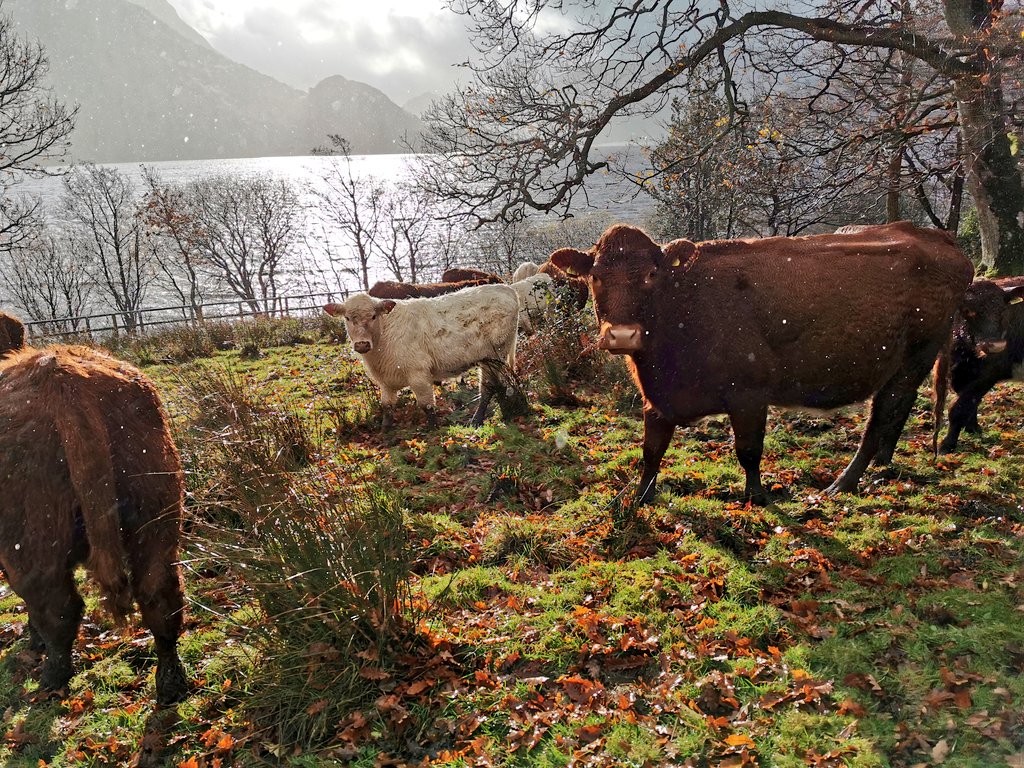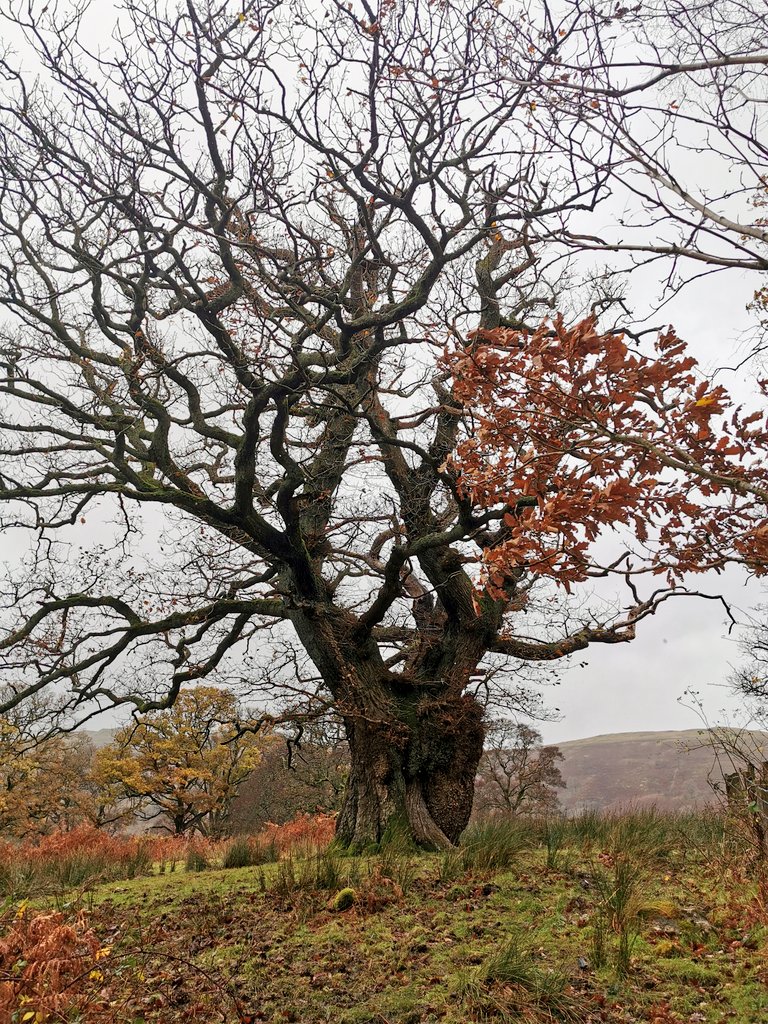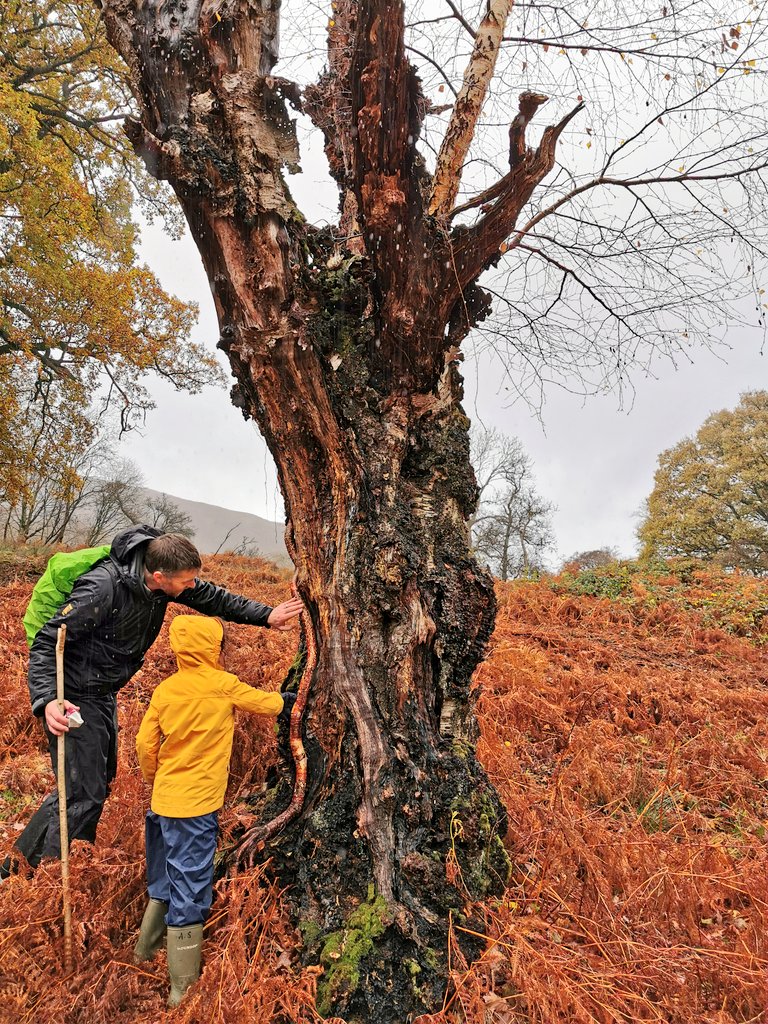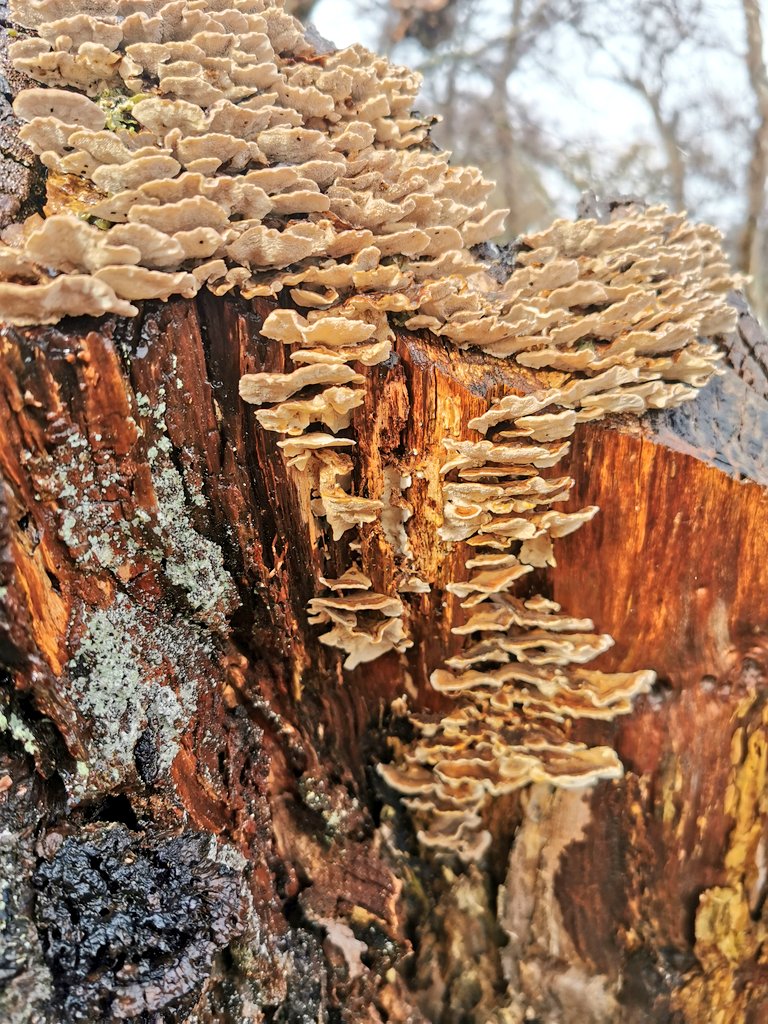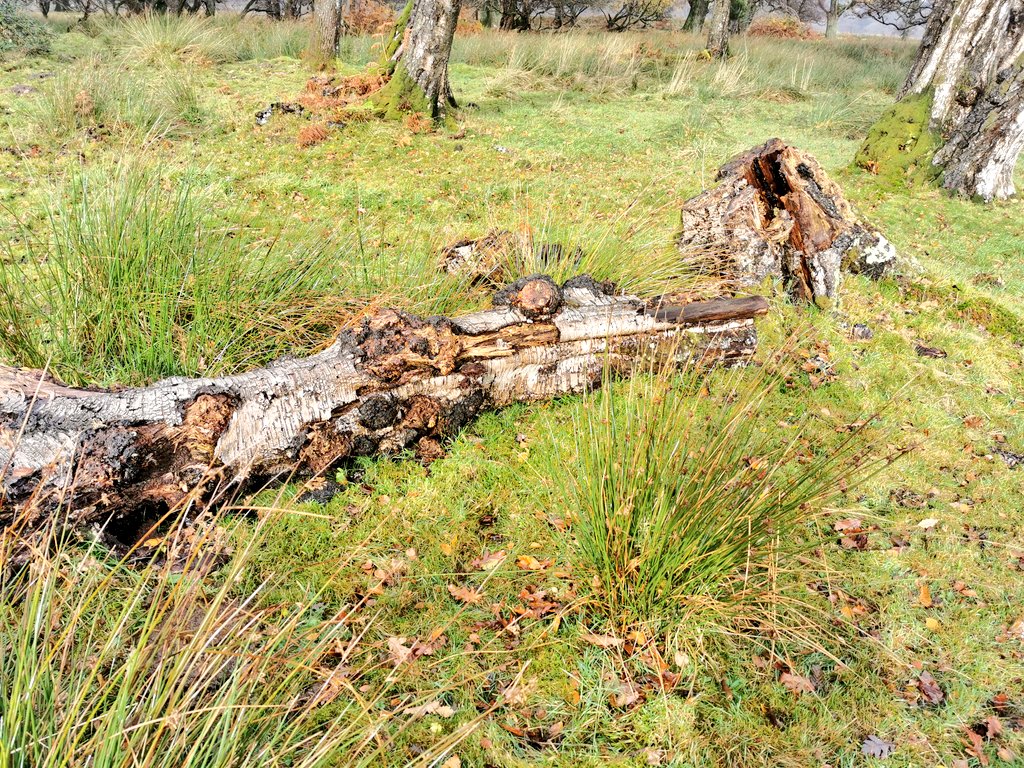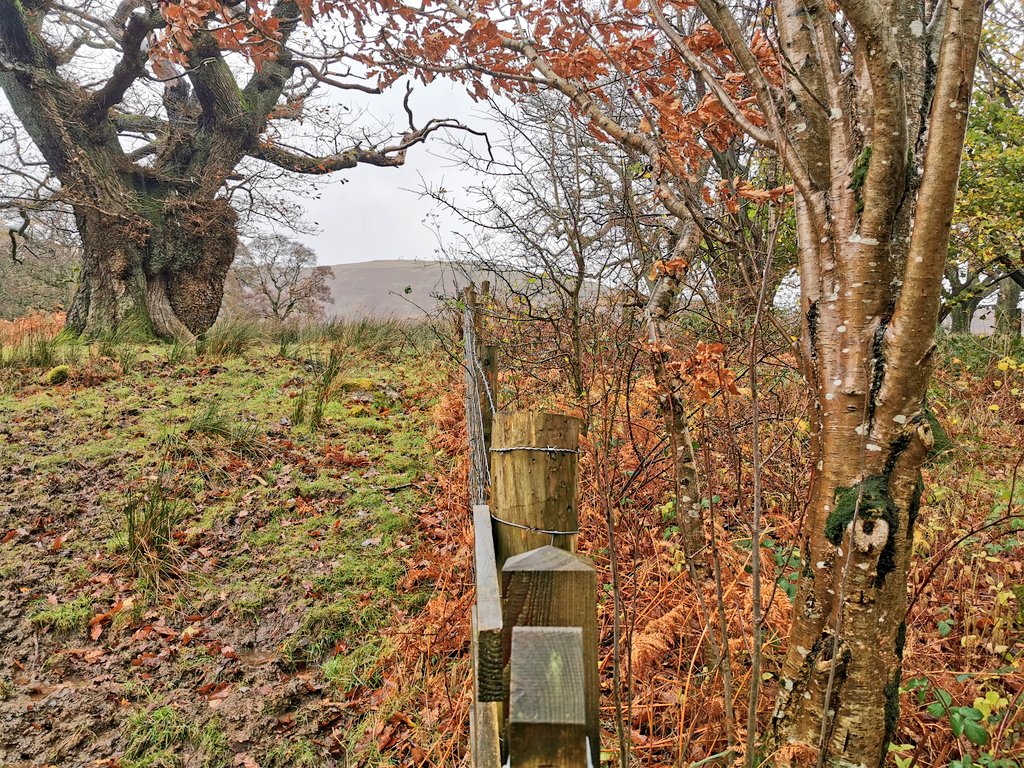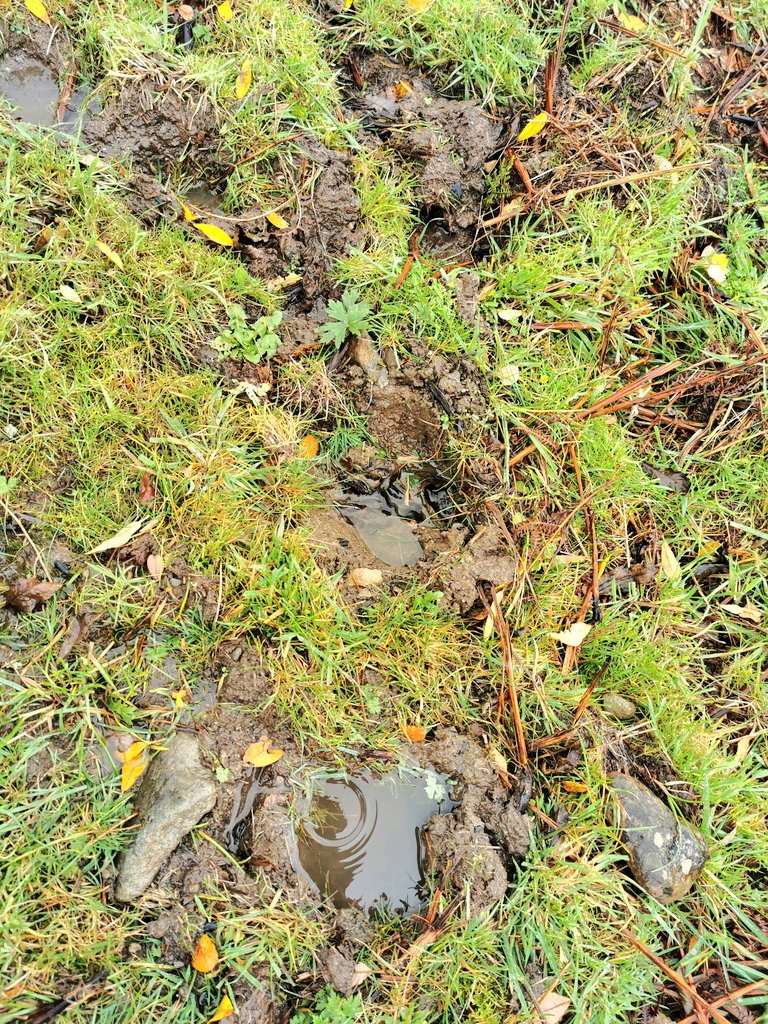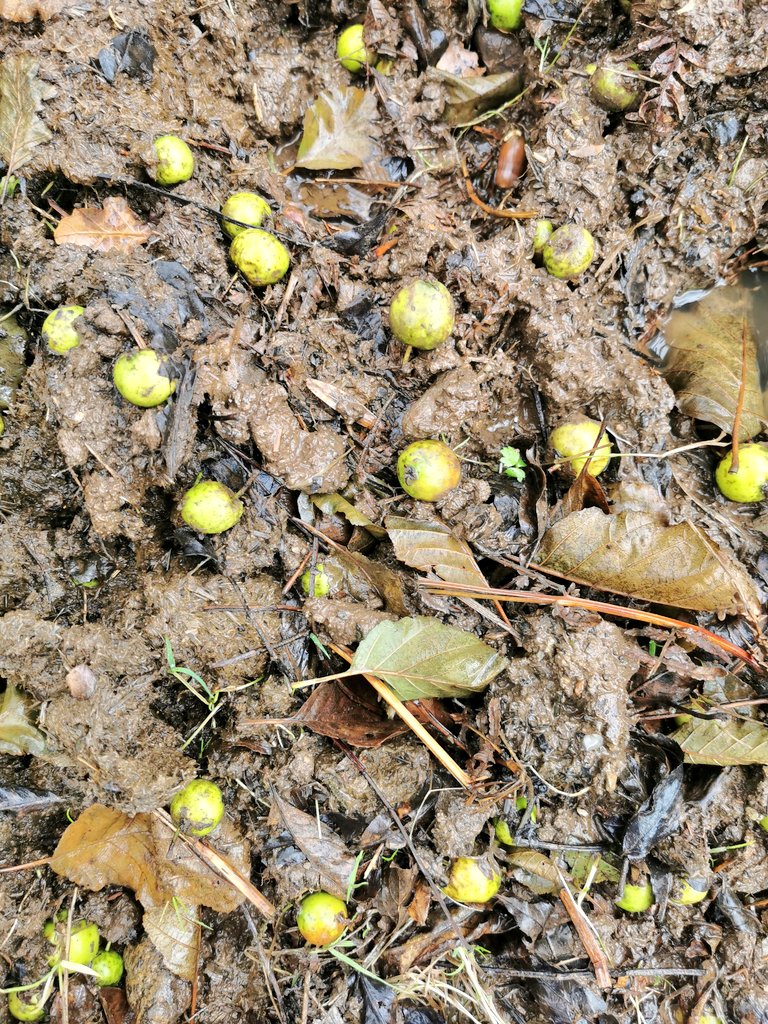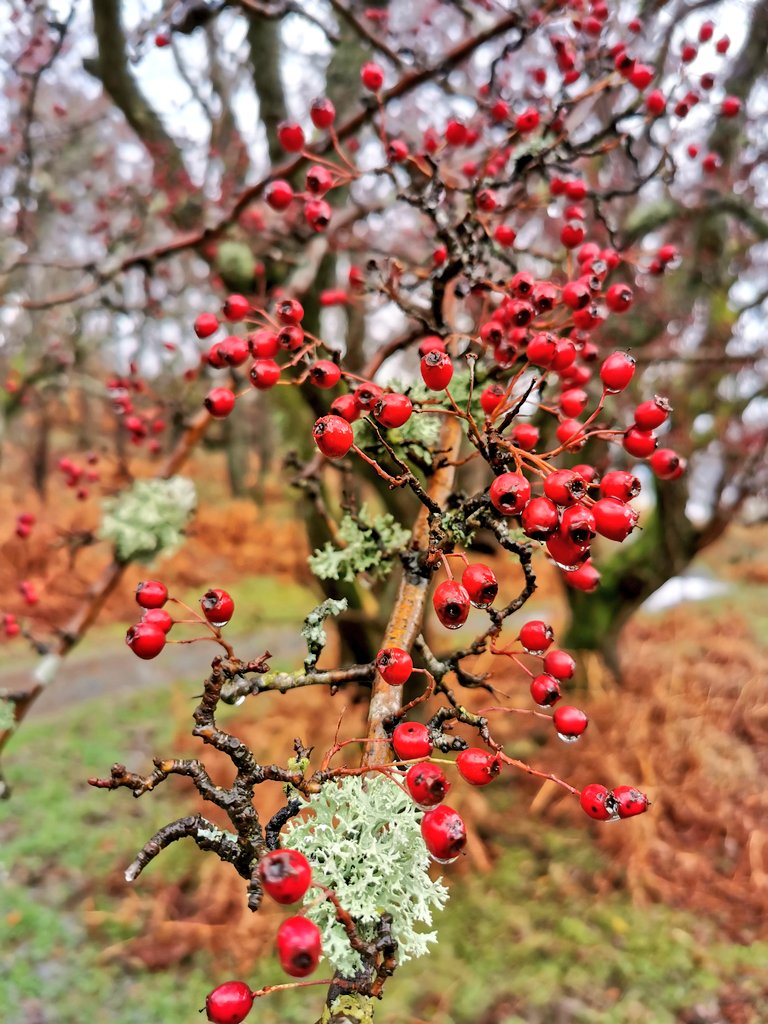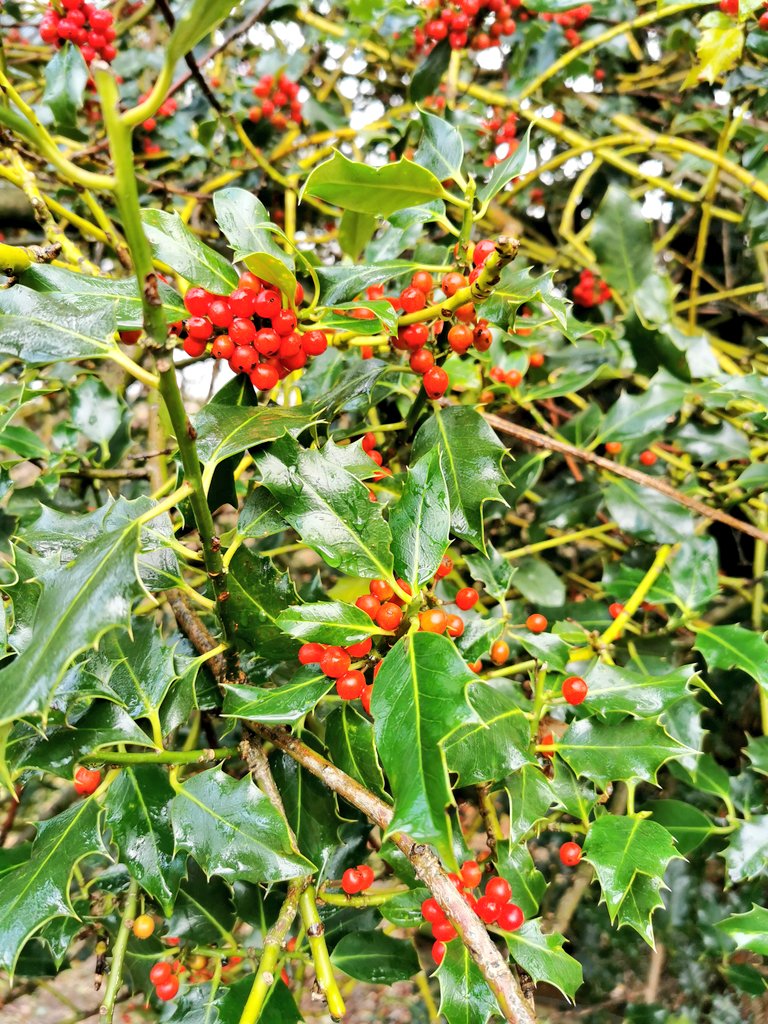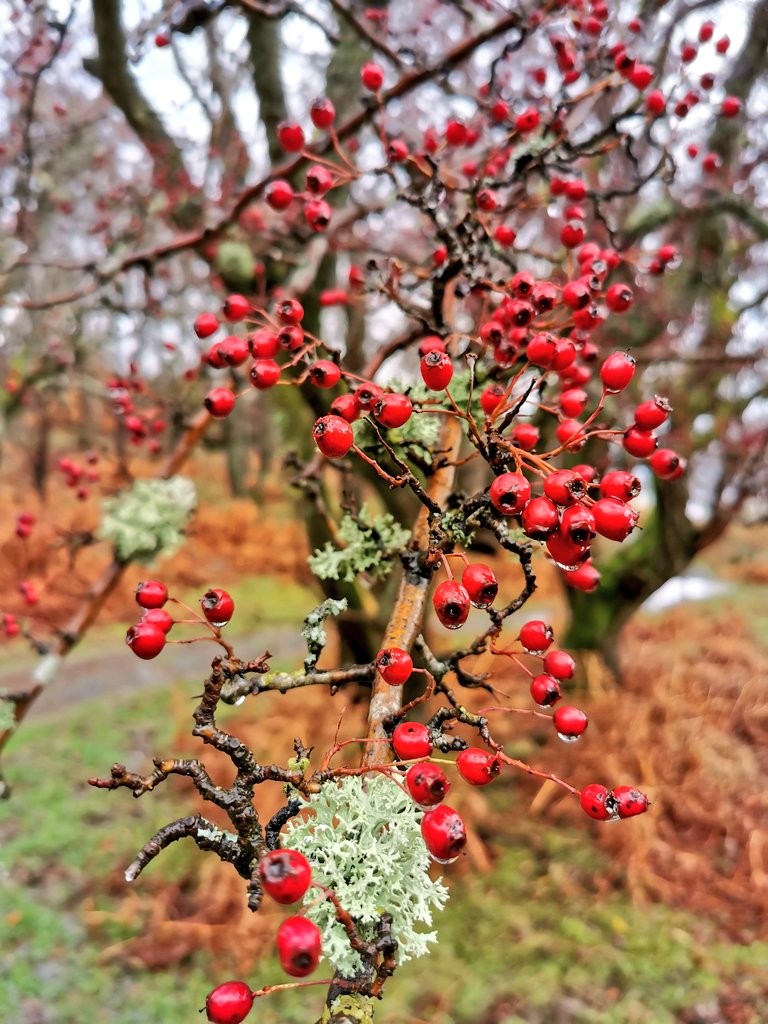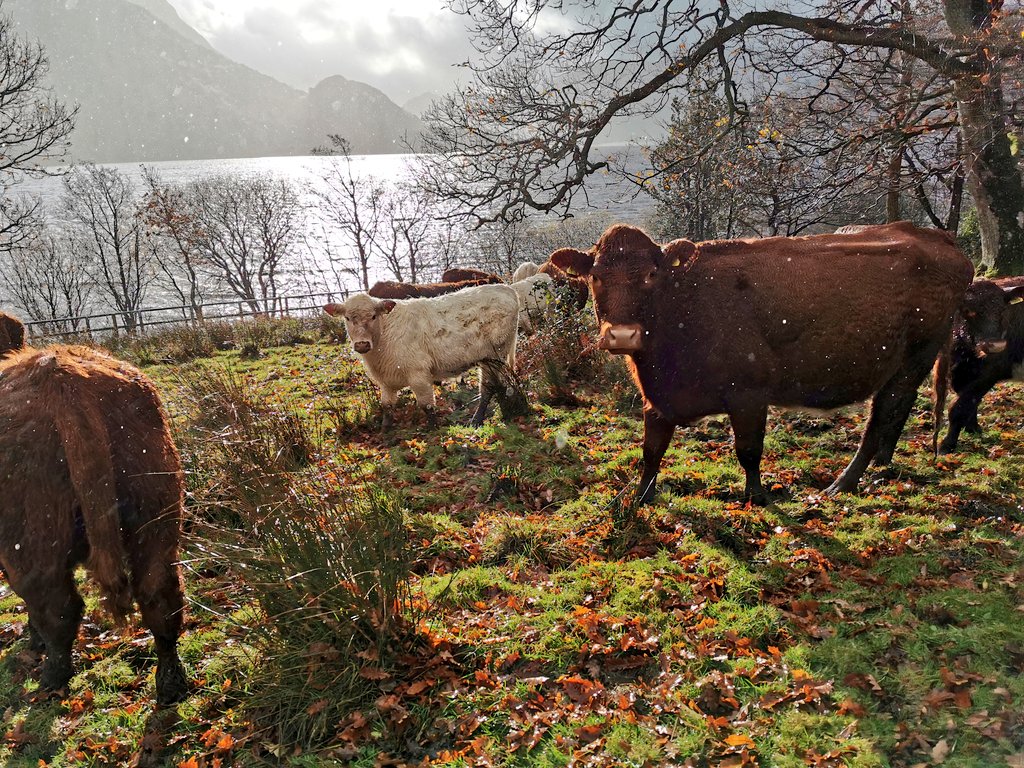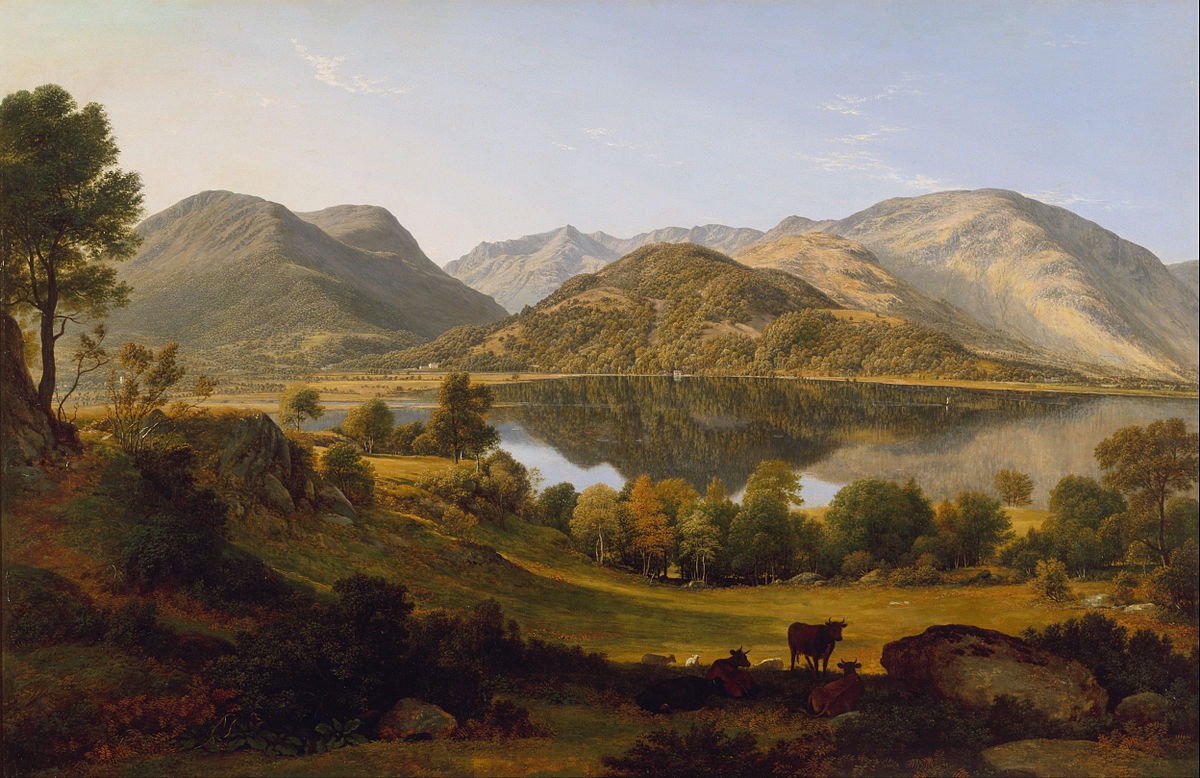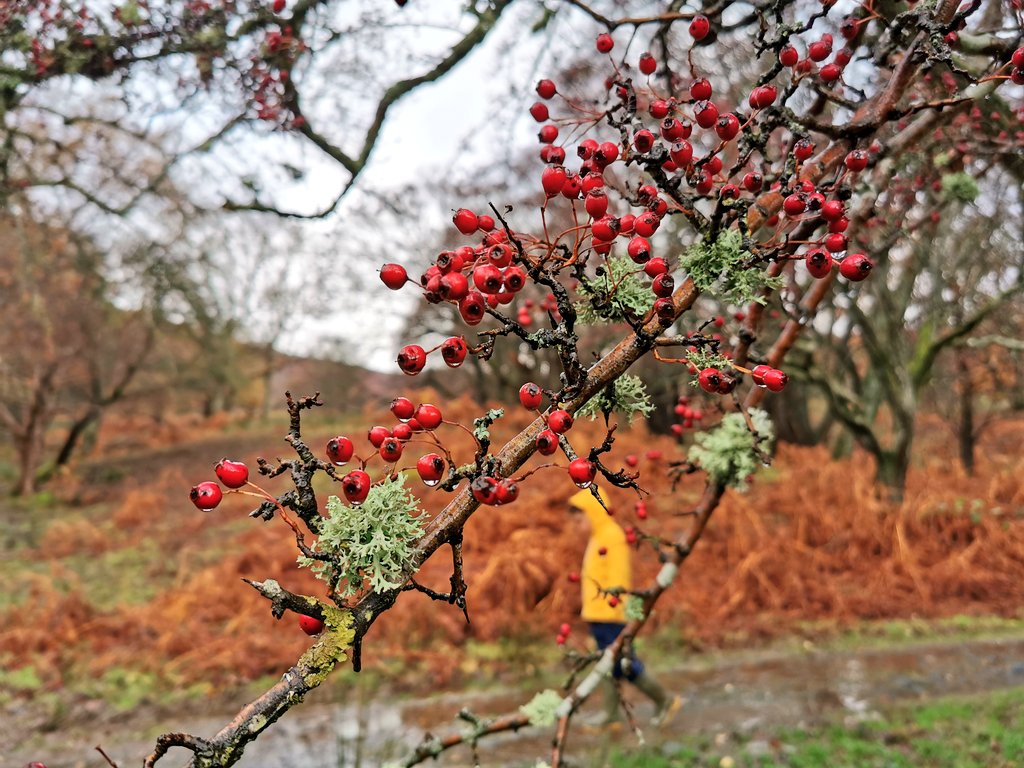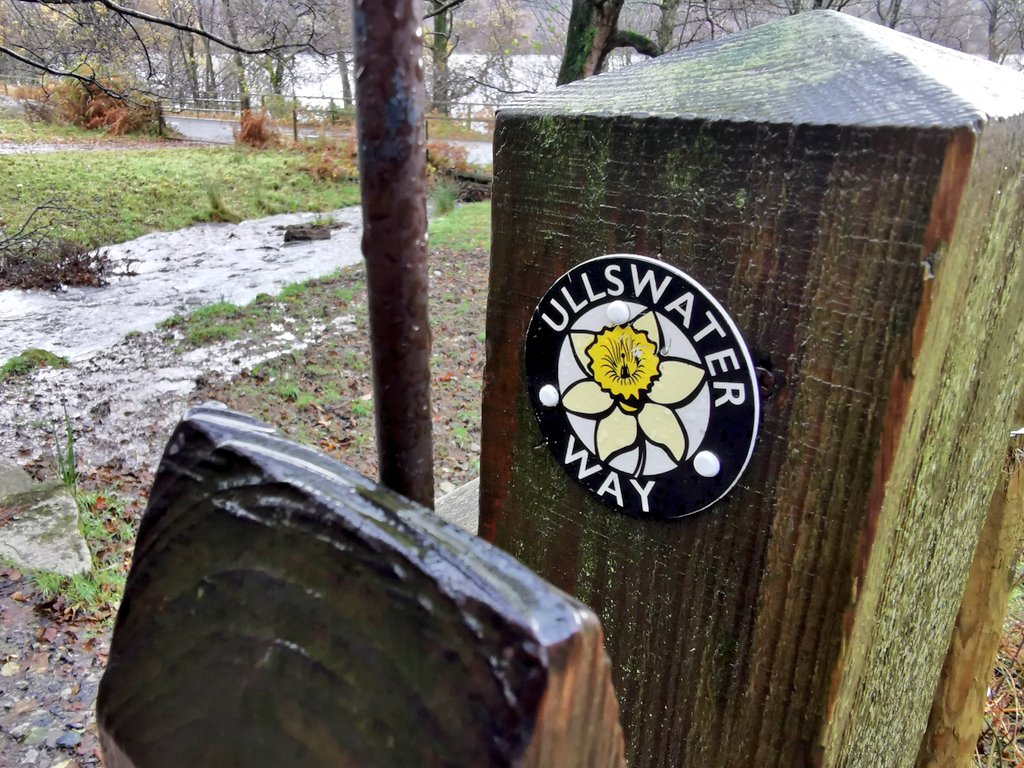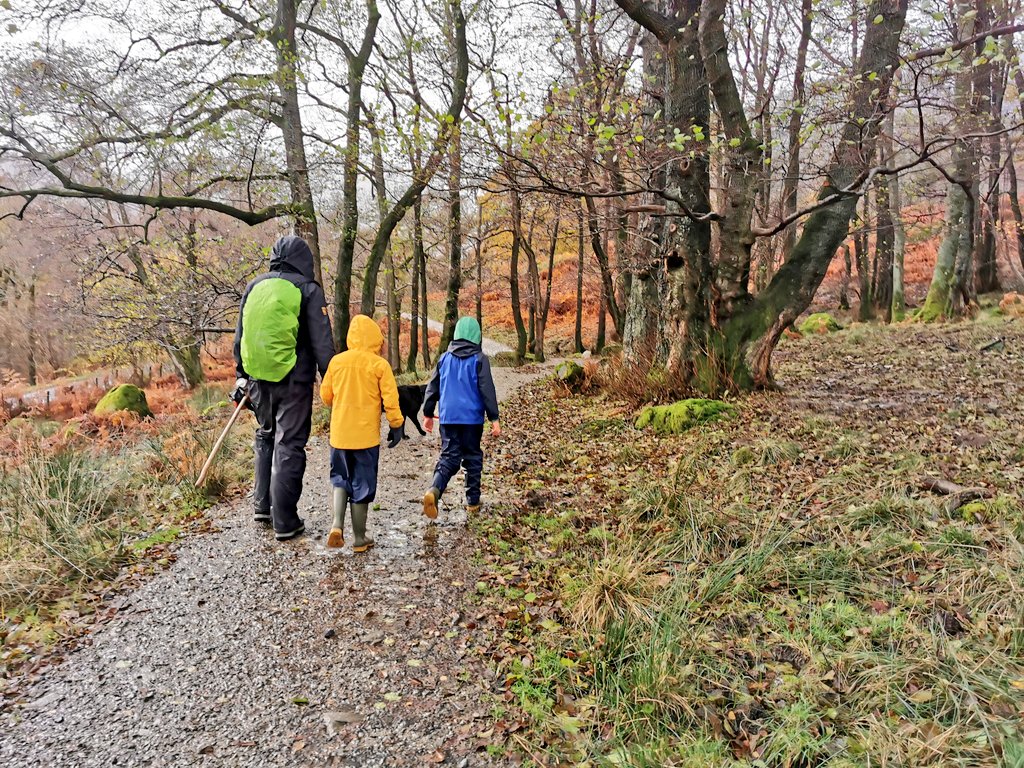Took a wet walk through some first class WOOD PASTURE on the shore of #ullswater this morning. Here's a thread to explain why it's such a fantastic habitat, and why we need more of it.
On the face of it, wood pasture is just a field with trees in it, but it's so much more than this. When well managed, with the right level of grazing, wood pasture is one of the richest habitats we have. In fact, it's more than just one, it's a habitat mosaic.
One of the most prominent features of a wood pasture, is big, old #trees. This one has lots of oak, ash, birch, holly, sycamore, hawthorn and alder, many with abundant rot holes, perfect for pied flycatchers, restarts and other hole nesting #bird species.
They support lots more than just birds though. Thanks to the #LakeDistrict's hyper-oceanic climate, many of the trees support ephiphytic ferns, mosses and liverworts, other plants and air-trees, like this holly and birch, growing up in their canopies.
Once these giants die, the dead wood they leave behind, standing or on the ground, provides vital habitat for a vast range of species, from #fungi and beetles to woodpeckers and woodlice.
For the next generation of trees to be grow, #scrub is essential. Here is a young birch is benefitting from natural protection from grazing by a bramble thicket. This thorny tangle is essential to ensure long term habitat continuity.
The level of grazing needs to be just right to allow these patches of scrub to thirve, but not dominate. In patches without grazing (rhs) the bramble is thicker and this area is woodland rather than wood pasture. Both these habitats are important and support different species.
With the right level of grazing, the cattle ensure that the area stays diverse. Scrub and bracken are patchy and broken up, there are also areas of short grass, good for ants and green woodpeckers, ranker areas, & bare ground where cattle congregate, helping many ruderal species
The wood pasture is as good for the cattle as the cattle is good for the wood pasture. They get a broad diet, thanks to the diversity they help maintain. Crab apples, berries leaves, supple twigs and diverse herbage makes for healthy cows.
The cattle dung is important for a suite of #invertebrates, which themselves become food for many species of birds. The bare ground makes for easy foraging for robins, which follow the cattle like they follow the gardeners fork.
The abundance of berries in the scrubby thickets feed winter flocks of fieldfares and redwings, as well as our resident blackbirds, squirrels and mamy other species. The place was bustling with birds, taking advantage of the food and the shelter from todays wind and rain.
It's thought that wood pasture is about the closest thing we have to the wildwood that covered much of our pre-human countryside, maintained by roving herds of wild herbivores. @Rebirding1 describes this beautifully in his book.
This fragment at Glencoyne is wonderful, and we're lucky to have it and the other rich patches elsewhere, but we need more. This painting by John Glover of Ullswater from 1824 suggests we used to have lots more than we do today.
Wood pasture seems to me to be just about the ultimate union of farming and nature. With the right incentives, @DefraGovUK could encourage the creation and restoration of much more. I hope they do.
This piece of wood pasture is on the Ullswater Way, and part of Glencoyne Farm and very easily accessible. It's the result of brilliant work by the farming tenants working with their landlord the excellent @nationaltrust

 Read on Twitter
Read on Twitter